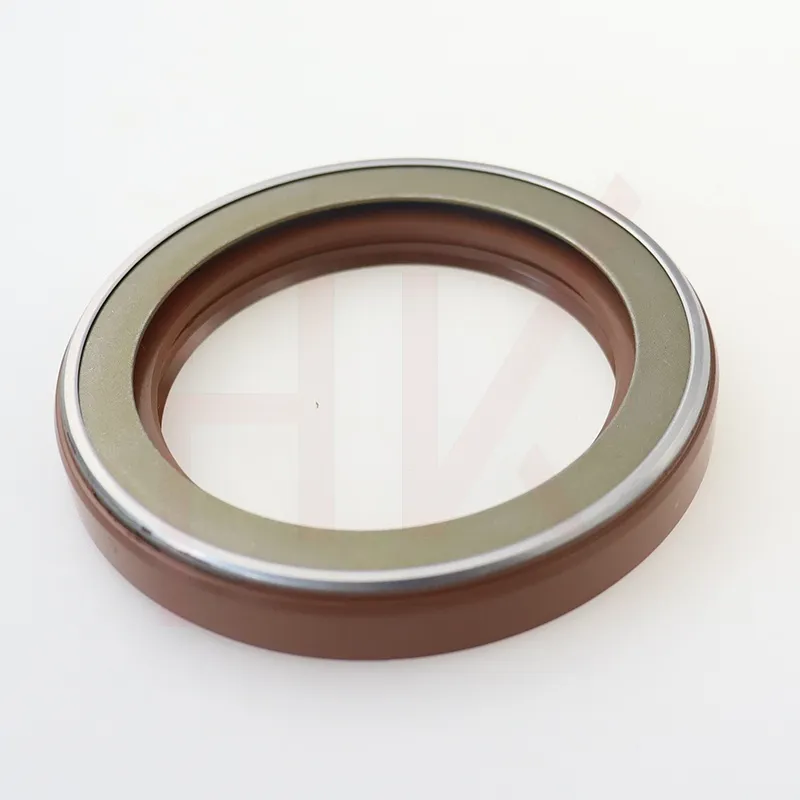Nov . 17, 2024 08:55 Back to list
Shaft Wiper Seals for Enhanced Protection and Fluid Control in Rotating Equipment
Understanding Shaft Wiper Seals Essential Components for Mechanical Systems
Shaft wiper seals play an integral role in various mechanical systems, ensuring optimal performance by protecting internal components from contamination. Often manufactured from durable materials such as rubber, elastomers, or composite materials, these seals are designed to be highly resilient against wear while maintaining effective sealing properties.
What Are Shaft Wiper Seals?
Shaft wiper seals, also known simply as wiper seals, are devices installed on rotating shafts in machinery and equipment. Their primary function is to prevent dirt, dust, moisture, and other contaminants from entering the system while simultaneously allowing the smooth operation of the shaft. Typically situated at the outer edge of a bearing or a cylinder, these seals help in maintaining cleanliness, which is crucial for the longevity of the machinery.
Importance of Shaft Wiper Seals
1. Contamination Control One of the major threats to the functionality of mechanical systems is contamination. Wiper seals act as a barrier, keeping harmful particles out, which can otherwise lead to rapid degradation of moving parts, bearings, and lubricants.
2. Enhanced Longevity By preventing contamination, wiper seals significantly extend the lifespan of machinery. This reduces downtime and maintenance costs, which is especially valuable in industrial settings where equipment failure can lead to expensive interruptions.
3. Operational Efficiency Efficient sealing contributes to smoother operation of mechanical systems. When contaminants are kept at bay, the friction between moving parts diminishes, leading to improved energy efficiency and reduced wear and tear.
shaft wiper seal

4. Versatility Shaft wiper seals are versatile and can be used in a wide range of applications, from automotive components to heavy machinery and even in household appliances. Their design can be tailored to fit various shaft sizes and operating conditions.
Design Considerations
When selecting or designing a shaft wiper seal, engineers must consider several factors
- Material Selection The choice of materials is critical, as it must withstand various environmental conditions such as temperature extremes, chemical exposure, and UV radiation. Common materials include nitrile rubber (NBR), fluorocarbon (FKM), and polyurethane.
- Size and Fit Precision in size ensures that the seal fits correctly around the shaft, preventing any gaps that could allow contaminants to penetrate. An ideal fit helps to maintain the seal's integrity over time.
- Operating Conditions The environment in which the seal will operate—such as exposure to moisture or aggressive chemicals—determines its design and material requirements.
Conclusion
In summary, shaft wiper seals are essential components that protect mechanical systems from contaminants, ensuring their efficiency and longevity. Their proper selection and maintenance can lead to significant cost savings and improved reliability in various applications. Understanding the function and importance of these seals can help users make informed decisions, leading to better operational outcomes in their equipment and machinery. As technology evolves, advancements in seal design and materials continue to enhance their effectiveness, making them indispensable in modern engineering solutions.
-
TCN Oil Seal Metal Ring Reinforcement for Heavy Machinery
NewsJul.25,2025
-
Rotary Lip Seal Spring-Loaded Design for High-Speed Applications
NewsJul.25,2025
-
Hydraulic Cylinder Seals Polyurethane Material for High-Impact Jobs
NewsJul.25,2025
-
High Pressure Oil Seal Polyurethane Coating Wear Resistance
NewsJul.25,2025
-
Dust Proof Seal Double Lip Design for Construction Equipment
NewsJul.25,2025
-
Hub Seal Polyurethane Wear Resistance in Agricultural Vehicles
NewsJul.25,2025
-
The Trans-formative Journey of Wheel Hub Oil Seals
NewsJun.06,2025
Products categories
















